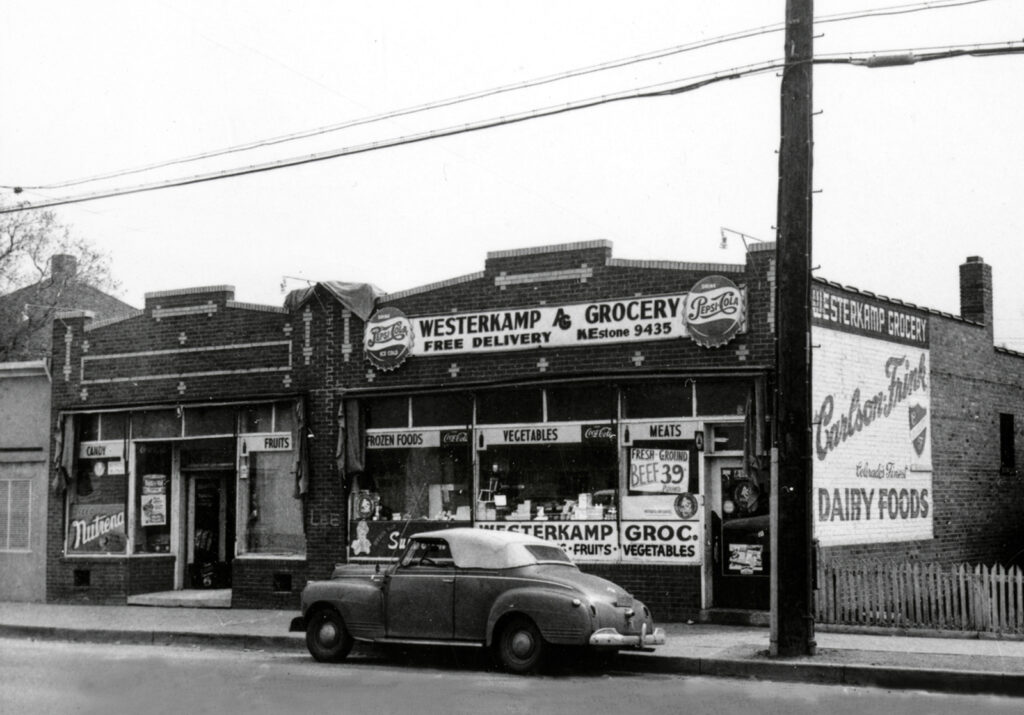By Mary Lou Egan

The signs practically shout: Pepsi-Cola, Carlson-Frink Dairy, Coca-Cola, Sunbeam Bread, Fresh Ground Beef 39¢ a Pound, Candy, Fruit, Vegetables and Frozen Food. Free Delivery!
Before the appearance of national chain stores in the 1950s, Globeville was served by small markets like Westerkamp’s Grocery at 51st and Washington Street.
The story of the grocery mirrors the upward path of the Westerkamp family. August Westerkamp was born in New York City in 1861, moved to Ohio and then Colorado, where he found a job with the Globe Smelter. In 1892, August married Matilda Nelson and they settled in Retreat Park, within walking distance from his job. Their sons Francis and Ralph also worked for the smelter in its company store on nights and weekends while they were in high school.
Francis’ son, Ed Westerkamp, remembered, “The smelter store at 5442 Washington carried everything a family needed, from meat, milk, produce, clothes and shoes. Even corsets! Prices were a little high, but you could buy on credit. After World War I, antitrust legislation required that the smelter sell its store and my dad, Francis, and uncle Ralph purchased it in 1919.
“Each customer was assigned a box with a number printed on it. Each morning, Francis or Ralph would take the orders on the phone, fill the boxes and deliver them by the afternoon. There was no charge for delivery or for allowing customers to pay at the end of the month. They were open six days a week from 7 a.m. to 7 p.m. The business grew, and in 1926 the brothers built a larger store at 5106 Washington.”
People in Globeville didn’t trust banks and would ask for a loan from someone they knew, like the Westerkamps, a tavern owner or their fraternal lodge. During the Depression, Westerkamp’s not only carried people financially, but also fed homeless people and gave part-time jobs to unemployed men. Ed recalled, “For years, people have asked me if I was related to Francis or Ralph and I would say ‘yes.’ They’d tell me, ‘Your dad saved our family.’”
By the 1950s, Globeville was changing. With the spread of industries and construction of the Valley Highway, the neighborhood began to deteriorate. Chain stores undercut Westerkamp’s prices and it was impossible to compete. After three decades of serving their community, the brothers sold the store in 1952.
The next chapter of the story will be told next month.
Mary Lou Egan is a fourth-generation Coloradan who loves history. You can reach her at maryloudesign@comcast.net.

Having grown up in Globeville….. this is just awesome to read about its history! Couldn’t have grown up in a better place!